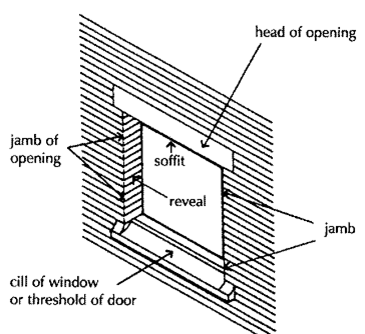SURVEYING & LEVELLING – I
CHAPTER NO. 1
INTRODUCTION
SURVEYING:
It is the art of determination of horizontal distances, differences in elevation, directions, angles, locations, areas and volumes on or near the surface of the earth. It involves the measurement and recording of the size and shape (including the vertical shape) of an area on the earth’s surface.
The process of survey divided into two parts:
(a) Field work- taking measurements
(b) Office work- computing and drawing.
OBJECT OF SURVEYING:
The primary object of survey is the preparation of plan or map. The results of surveys when plotted and drawn on paper constitute a plan. A plan is, the representation to some scale, of the ground and the objects upon it as projected on a horizontal plane, which is represented by the plane of the paper on which the plan is drawn. The representation is called a map, if the scale is small. If the scale is large, it is called a plan. On plan, only horizontal distances are shown. The scale of a map is the fixed relation that, every distance on the map bears to the corresponding distance on the ground. Suppose, if one cm on a map represents 5 m on the ground, the scale of a map is 5m to 1 cm.
PRIMARY DIVISION OF SURVEYING:
Surveying may be divided into two general classes:
(a) Geodetic surveying
(b) Plane surveying
(a) GEODETIC SURVEYING:
It is also called Trigonometrical surveying. The object of a geodetic surveying is to determine the precise positions on the surface of the earth of a system of widely distant points and the dimensions of areas. In this survey, the curvature of the earth is taken into account, since large distances and areas are covered. Artificial earth satellites have come into wide use in this survey.
(b) PLANE SURVEYING:
In this survey, the earth’s surface is considered as a plane. The curvature of the earth is not taken into account, as the surveys extend only to small areas.The line joining any two points as a straight line, and all angles are plane angles. Surveys normally carried out for the location and construction of roads, canals and, buildings. In general, the surveys necessary for the works of man are plane surveys.
CLASSIFICATION: Surveys may be classified in a variety of ways.
I. Classification based upon the nature of the field of survey:
(a) Land Surveys.
(b) Marine or Navigation Surveys.
(c) Astronomical Surveys.
II. Classification upon the object of survey:
(i) Archaeological surveys.
(ii) Geological Surveys -for determining different strata in the earth‟scrust.
(iii) Mine Surveys- for exploring mineral wealth such as gold, coal, etc.(iv) Military Surveys- for determining points of strategic importance both offensive and defensive.
III. Classification based upon the methods employed in survey:
(a) Triangulation Surveys.
(b) Traverse Surveys.
IV. Classification based upon the instrument employed:
(i) Chain Surveys.
(ii) Theodolite Surveys.
(iii) Tacheometric Surveys.
(iv) Compass Surveys.
(v) Plane Table Surveys.
(vi) Photographic and Aerial Surveys.
AGRICULTURAL SURVEYING:
It is a simple plane surveying. It includes laying out contour and terrace lines for soil conservation, drainage lines, profile lines for land levelling and ditch lines for irrigation, computing field and farm areas and laying out farm buildings and roads.
USES OF SURVEYING:
The planning of all engineering and construction projects extending over large
areas, such as highways, railways, irrigation, water supply etc., are based upon
elaborate and complete surveys.
SCALE:
Scale express the ratio of distances between two points on the map and the corresponding distance between the same two points on the ground. There are at least three ways in which this relationship can be expressed.
These are:
1. Statement of Scale
2. Representative Fraction (R. F.)
3. Graphical Scale
1. STATEMENT OF SCALE:
The scale of a map may be indicated in the form of a written statement. For example, if on a map a written statement appears stating 1 cm represents 10 km, it means that on that map a distance of 1 cm is representing 10 km of the corresponding ground distance. It may also be expressed in any other system of measurement.i.e. 1 inch represents 10 miles. It is the simplest of the three methods.
PLANE SCALE:
The second type of scale shows map distances and the corresponding ground distances using a line bar with primary and secondary divisions marked on it. This is referred to as the Plain scale or graphical scale or bar scale. It may be noted that the scale reading reads only in kilometers and meters. In yet another bar scale the readings may be shown in miles and furlongs. A plain scale is simply a line, which is divided into a suitable number of equal parts, the first of which is further sub-divided into small parts. It is used to represent either two units
or a unit and its fraction such as km, m and dm, etc. Let us do some examples so that
you can better understand the plain scales.




 12:19 pm
12:19 pm
 Unknown
Unknown






































